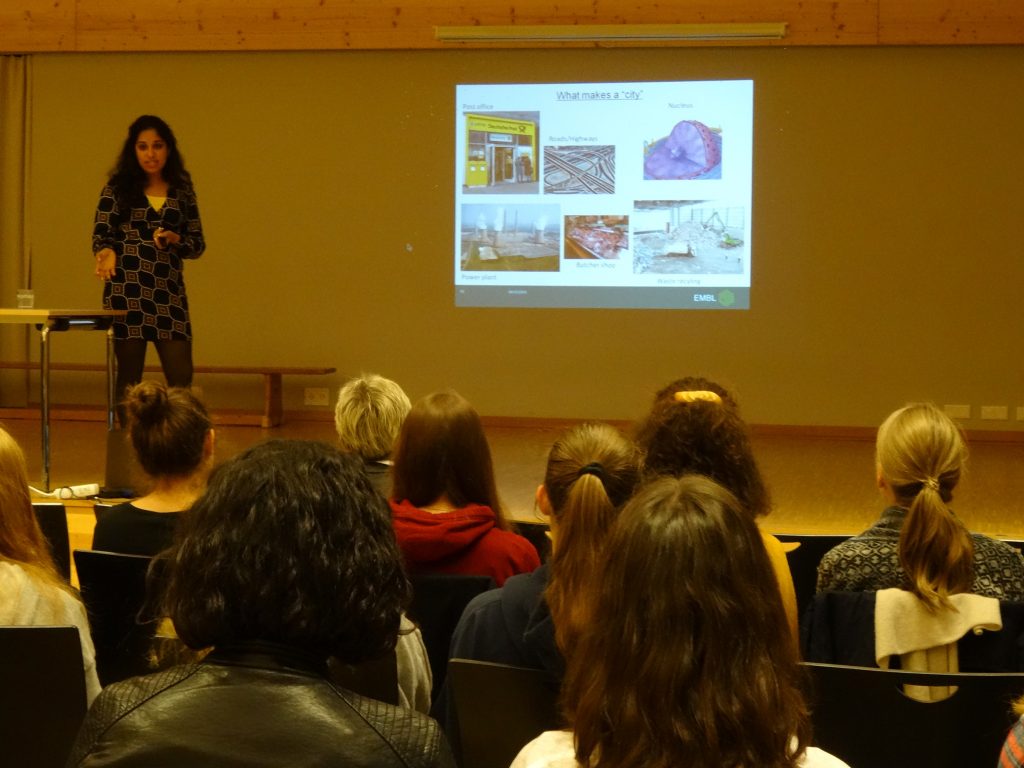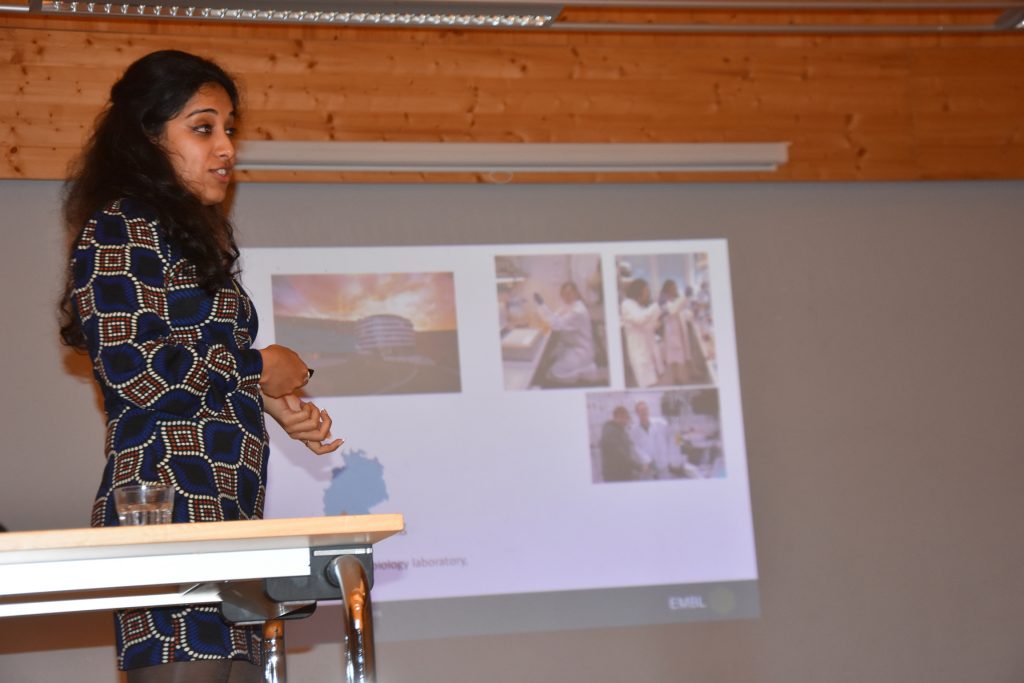EMBL School Ambassador Heena Khatter
Country: India
Profile
I am Heena Khatter, an interdisciplinary postdoctoral fellow in the groups of Christoph Mueller and Christian Haering.
I was born and brought up in Delhi, India where I also pursued my bachelors and masters studies in biochemistry. During my studies, I had the chance to be involved in scientific research, which I really enjoyed and motivated me to pursue my PhD. To expand my experience and competitiveness in the global research community, I decided to start a PhD in Europe.
I moved from one of the largest metropolitans in India, to a small town in the heart of Europe, Strasbourg. There at the IGBMC, I worked on the translation machinery in a cell, studying the structure-function relationship of the human ribosome. After my doctorate, I stayed for another six months to complete the on-going projects, and then moved to EMBL, Heidelberg, for my postdoc. Here, I am currently studying the structural and functional aspects of the transcription machinery in yeast cells and its link to the chromosome condensation pathway.
Diary
“The Central Dogma in Biology (The finely orchestrated ballet inside a cell)”
I believe that all of us scientists pursuing basic research also have a duty towards the general public – make them aware of how our work is important and of relevance to them. And what can be a better start than engaging with an audience of young motivated students?
ELLS gave me the opportunity to do this – Eva Haas put me in touch with Dr. Ullrich Treubert-Zimmermann, a biology teacher at the AKG Bensheim, who invited me to talk about my work at his school.
So in October 2016 I visited the AKG Bensheim for a presentation to the school students and the local audience. I focused on the central dogma in molecular biology, covering my PhD and current work. I started with a general introduction, comparing the functioning of a cell to a city – with the various compartments in the cell being very much like the different departments in a city. Focusing on the nucleus, I explained the process of transcription and translation in a cell. To make it more visual, I made use of a Youtube video that highlighted how the synchronized activities of the RNA polymerase during transcription and the ribosome during translation lead to the production of every protein in a cell. Despite my initial fears, the students responded really well and wanted to know more! So, I talked about Cryo Electron Microscopy (or cryo-EM for short) – the major technique I use for visualizing structural details of my protein complexes – and showed them how I used cryo-EM to determine the structure of the human ribosome during my PhD project. The reaction of the students on seeing the atomic details was awe-inspiring and it really paid off. In the long run, we tend to lose the enthusiasm and the passion we had for research. And this was the spark I saw in the eyes of the students!

At the end of the talk, there were a lot of questions and a very enthusiastic discussion about scientific research. They asked about the biological implementations in the pharmaceutical companies and technical questions about how a microscope works (which meant they did understand what I explained). They were also very curious about some general aspects of how the research environment is, if I work alone on the projects, how is it to work in a group and how to decide which laboratory you want to join. This is the part that I enjoyed the most. It was a highly rewarding experience and I would highly recommend scientists to try an outreach activity, to explain your work without scientific jargons.
Before the talk, a woman from the audience had asked me “if this would be like a TED talk about the central dogma in molecular biology”. With the questions, and the response from the audience I believe, it indeed was.


